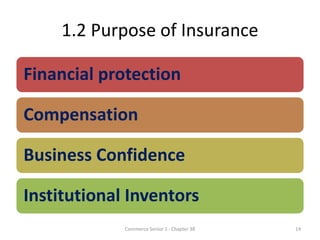7 Easy Facts About Pacific Prime Described
About Pacific Prime
Table of ContentsThe Basic Principles Of Pacific Prime Pacific Prime Fundamentals ExplainedOur Pacific Prime DiariesThe 8-Minute Rule for Pacific PrimeThe Ultimate Guide To Pacific Prime

This is because the data were collected for a period of solid economic efficiency. Of the estimated 42 million people that were uninsured, all but concerning 420,000 (about 1 percent) were under 65 years old, the age at which most Americans become eligible for Medicare; 32 million were grownups between ages 18 and 65, around 19 percent of all adults in this age team; and 10 million were youngsters under 18 years of age, about 13.9 percent of all kids (Mills, 2000).
These quotes of the variety of individuals uninsured are created from the annual March Supplement to the Current Populace Study (CPS), carried out by the Demographics Bureau. Unless or else noted, national quotes of people without wellness insurance and proportions of the population with various sort of coverage are based on the CPS, the most commonly made use of resource of estimates of insurance policy coverage and uninsurance rates.
Fascination About Pacific Prime

Still, the CPS is particularly helpful because it produces yearly quotes fairly rapidly, reporting the previous year's insurance coverage approximates each September, and due to the fact that it is the basis for a constant set of estimates for even more than two decades, permitting for analysis of patterns in protection gradually. For these reasons, as well as the extensive usage of the CPS in other studies of insurance policy coverage that are presented in this record, we rely upon CPS estimates, with constraints noted.

The price quote of the number of without insurance people expands when a populace's insurance condition is tracked for several years. Over a three-year duration beginning early in 1993, 72 million individuals, 29 percent of the united state populace, lacked protection for at least one month. Within a solitary year (1994 ), 53 million individuals experienced at the very least a month without coverage (Bennefield, 1998a)
6 out of every ten uninsured grownups are themselves employed. Working does improve the probability that one and one's family participants will have insurance policy, it is not an assurance. Even members of family members with two permanent wage earners have almost a one-in-ten possibility of being without insurance (9.1 percent uninsured price) (Hoffman and Pohl, 2000).
Little Known Questions About Pacific Prime.
New immigrants represent a substantial percentage of people without medical insurance. One evaluation has actually attributed a considerable section of the recent growth in the size of the united state without insurance populace to immigrants who showed up in the nation in between 1994 and 1998 (Camarota and Edwards, 2000). Current immigrants (those who concerned the USA within the previous 4 years) do have a high rate of being without insurance (46 percent), yet they and their youngsters make up simply 6 percent of those without insurance nationally (Holahan et al., 2001).
The connection between health and wellness insurance coverage and accessibility to care is well developed, as recorded later on in this phase. Although the partnership in between wellness insurance policy and wellness end results is neither straight neither basic, an extensive clinical and health services research literature links health insurance policy protection to better accessibility to care, much better high quality, and improved individual and populace wellness standing.
Levels of analysis for examining the effects of uninsurance. This conversation of health and wellness insurance protection focuses primarily on the united state population under age 65 due to the fact that basically about his all Americans 65 and older have Medicare or various other public coverage. Furthermore, it concentrates specifically on those with no medical insurance for any kind of length of time.
Everything about Pacific Prime
The troubles encountered by the underinsured remain in some areas comparable to those encountered by the uninsured, although they are generally less severe. international travel insurance. Uninsurance and underinsurance, nonetheless, include noticeably various plan problems, and the methods for resolving them may differ. Throughout this study and the five reports to adhere to, the major emphasis is on persons with no medical insurance and hence no assistance in spending for health and wellness treatment beyond what is readily available through charity and safety net organizations
Medical insurance is an effective aspect impacting receipt of treatment since both clients and physicians react to the out-of-pocket cost of services - https://peatix.com/user/21635503/view. Medical insurance, nonetheless, is neither essential neither adequate to access to clinical solutions. Nevertheless, the independent and direct effect of wellness insurance policy coverage on access to wellness solutions is well established.
Others will get the healthcare they require also without health and wellness insurance coverage, by paying for it expense or seeking it from suppliers who supply treatment cost-free or at highly subsidized prices. For still others, medical insurance alone does not guarantee invoice of care due to the fact that of other nonfinancial obstacles, such as a lack of healthcare carriers in their community, minimal access to transportation, illiteracy, or etymological and cultural differences.
The smart Trick of Pacific Prime That Nobody is Talking About
Official research regarding uninsured populations in the United States dates to the late 1920s and early 1930s when the Board on the Expense of Healthcare produced a series of reports concerning financing doctor workplace gos to and hospital stays. This problem came to be significant as the numbers of medically indigent climbed during the Great Clinical depression.